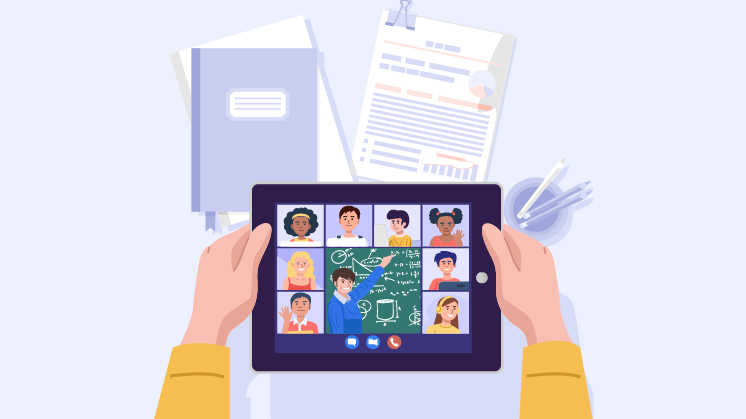In the new era of learning, it is increasingly vital for instructors and educators to find innovative ways to keep students engaged with their course material. But as technology continues to evolve and change, this task has become more challenging. In this article, we will explore how you can use the latest advancements in AI and automation to keep students engaged online in the coming years.
The Benefits of Online Learning
One of the benefits of online learning is that it can be customized to each individual student’s needs and interests. Students can learn independently and review concepts as often as needed. Online learning is also flexible, so students can access courses and materials at times that fit their schedules.
Another benefit of online learning is that it allows students to learn in a comfortable environment. They can avoid distractions and focus on the material more easily. Additionally, online courses often offer more interaction with instructors than traditional courses, which can help keep students engaged.
Strategies for Maintaining Student Interest
When it comes to online students, one of the essential factors in maintaining interest is providing a well-rounded and engaging curriculum. Other than that, here are a few Key strategies for keeping students engaged online.
Personalized Learning
Personalized learning is a huge draw for online students. By allowing learners to control their education’s pace, structure, and delivery, they can gain a much deeper understanding of the material. When students can tailor their learning experience to their needs, they are more likely to stay engaged and motivated.
There are a few key ways to ensure that your online students have a personalized learning experience:
1. Allow flexible pacing
One of the critical advantages of online learning is that students can complete assignments at their own pace. This means you should avoid setting strict project deadlines and let students work at their own speed.
2. Provide tailored content
Make sure your content is relevant and interesting to your students. Keep in mind that everyone learns differently, so offer a variety of materials (text, audio, video, etc.) to cater to different preferences.
3. Offer individualized support
Be available to answer questions and provide feedback on student progress. Remember that each learner is unique, so take the time to get to know your students and how they learn best.
By following these tips, you can create an engaging and personalized learning experience for your online students!
Virtual Breakout Sessions
Whether using an LMS or a web conferencing tool, breakout sessions are a great way to keep online students engaged. By breaking them out into smaller groups, you can create a more intimate environment where students feel more comfortable participating. Plus, it allows you to give each group more attention so you can address any questions or concerns they may have.
Incorporate Technology
Technology has become such an integral part of our lives that it only makes sense to include it in our educational pursuits. Online classes are no different in this regard. To maintain online student interest, educators must find ways to incorporate technology into their courses.
One way to do this is by using social media platforms to engage with students outside the traditional classroom setting. Twitter, Facebook, and Instagram can all be used to post announcements, share resources, and start discussions. Students can also use these platforms to connect and form study groups.
Another way to incorporate technology is by using online tools and resources in the classroom. Google Docs, Sheets, and Slides are all excellent collaborative tools that can be used for group projects and assignments.
Of course, only some students will be equally comfortable with technology. It’s important to remember that there will always be a mix of tech-savvy and tech-resistant students in any given class. The key is to find a balance between using technology to benefit all students without overburdening anyone.
Visual Aids and Podcasts
When it comes to online education, one of the best ways to maintain student interest is by using visual aids and podcasts. This is because they can break up the monotony of reading text-based materials and listening to lectures.
Some visual aids that can be used include images, infographics, and videos. These help explain concepts more engagingly than simply reading about them. For example, if you are teaching a history lesson, you could use an infographic to show how different events unfolded over time. Similarly, if you are explaining a scientific concept, a video could be used to show how it works in real life.
Podcasts are another great tool for keeping students engaged. They can be used to supplement lectures or provide additional information on a topic. For instance, if you are discussing a news event in your class, you could have students listen to a podcast about it afterward to get more perspectives on the story. Podcasts are also great for students who prefer listening to information rather than reading it.
Challenges of an Online Learning Environment
Some challenges can make it difficult to maintain interest throughout an entire semester. One challenge is the student’s personal life. Regardless of the format, classes always compete with other student time priorities. With online courses, there is more flexibility in when and where classwork gets done.
Another challenge specific to online learning is distractions during class. Although students are not physically in a classroom together, they are often logged into the same virtual space simultaneously. They can easily be distracted by outside sources, like checking email or browsing social media.
Finally, an unrelated but essential factor is the technology itself. If a student is having technical difficulties or isn’t comfortable using the learning management system (LMS), it can hinder their interest and ability to participate in an online course.
Ways to Connect with Students
There are a few ways to connect with students online to help maintain their interest.
Know Your Students
Ask them about their interests, what they like to do for fun, etc. This will help you connect with them personally and make it more likely that they’ll be engaged in the class.
Be Available and Responsive
Make sure you answer any questions they have promptly and give feedback on their work so they feel like you’re invested in their success.
Create A Sense of Community in Your Online Class
This can be done by having regular check-ins, starting discussions on topics that everyone can contribute to, and providing opportunities for collaboration. If students feel like they’re part of a supportive group, they’ll be more engaged in the class overall.
Importance of Social Media Platforms and Apps in eLearning
It’s no secret that social media platforms and apps are a huge part of student’s lives. In fact, according to a recent report, 73% of teenagers in the United States have at least one social media account.
That being said, if you’re looking for ways to maintain online student interest in your course or program,
leveraging social media can be a great way to do so. Here are a few tips:
- Create a hashtag for your course or program and encourage students to use it when posting about their experience. This is a great way to create a sense of community and see what students say about your program.
Share interesting articles, blog posts, or other resources on social media for your course or program. This will help - keep students engaged and curious about what you’re teaching.
- Use social media to give students sneak peeks into upcoming assignments or projects. This will get them excited about what’s coming up and help them feel more invested in the class.
- Take advantage of live-streaming capabilities on platforms like Facebook Live or Instagram Stories to give students a behind-the-scenes look at what goes into running your course or program. This can be especially helpful for providing prospective students with a taste of what they can expect if they enroll.
- Host social media-based Q&As or office hours where students can ask questions.
Why Open Forums and Provide Regular Feedback
Online students can easily become disengaged and even drop out of their courses. One of the best ways to combat this is to keep the lines of communication open between you and your students. Host regular forums where students can ask questions, give feedback and interact with each other. This will help them feel more invested in the course and enable you to get a pulse on how they’re doing. Be sure to respond promptly to any questions or concerns in the forums. Regular feedback will go a long way in keeping your online students engaged and motivated throughout the semester.
Wrap Up
In conclusion, the key to successful online learning in 2023 is finding creative ways to maintain student interest. By creating microlearning modules, utilizing virtual reality technologies, and engaging with students on a more personal level, teachers and instructors can ensure their students stay engaged. As technology continues to advance, strategies for maintaining student interest will have to continue adapting – but if we keep our focus on providing quality experiences while being thoughtful of the digital literacy of today’s learners, success can be achieved.
Frequently Asked Questions
Q1. What Are The 3 Main Advantages Of eLearning?
The three main advantages of eLearning are cost-efficiency, convenience, and customization. With eLearning, students can access courses from anywhere with access to the internet, allowing them to learn at their own pace and on their schedule.
Additionally, eLearning can be much cheaper than traditional in-person training, as there are no travel or room rental costs associated. Finally, eLearning is customizable so that students can tailor the course content to their individual needs and preferences.
Q2. Is Online Learning Better Than a Classroom?
Whether online learning or classroom learning is better depends on the individual. For some, a traditional classroom setting provides structure, social interaction, and the ability to ask questions in real time.
On the other hand, online learning offers more flexibility, allowing students to learn anywhere and at their own pace. Ultimately, it is up to each learner to decide which learning method works best for them.
Q3. How Do You Keep Students Engaged Online?
When it comes to online students, one of the most important things you can do is keep them engaged. Here are a
few ways to do just that:
1. Make sure your content is engaging and relevant.
Your students will quickly disengage if they feel your content could be more interesting and valuable. Make sure to keep your lectures, readings, and assignments relevant to their lives and interests.
2. Use a variety of multimedia in your teaching.
Don’t just rely on text-based materials. Incorporate videos, audio recordings, infographics, and other media types into your online course to keep things fresh and engaging.
3. Encourage interaction between you and your students.
Make yourself available to answer questions and address concerns. And remember to give your students opportunities to interact with each other – this can help prevent feelings of isolation that can lead to disengagement.






